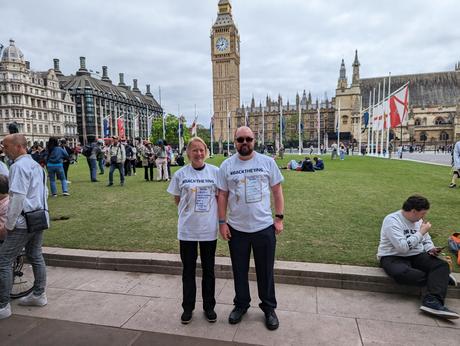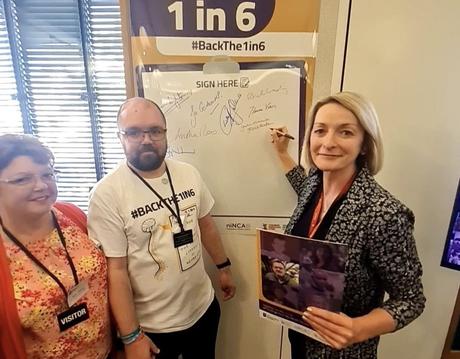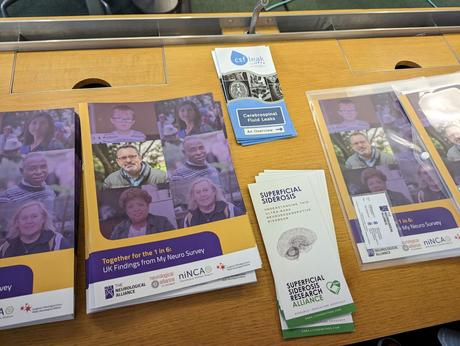
Department of Health and Social Care
Members of The Neurological Alliance Co Production Group (a group of people from across the U.K. with lived experiences of neurological conditions) and The Neurological Alliance Staff, met with representatives from the Department of Health and Social Care to hand in the signed petition of over 19,000 signatures supporting the #BackThe1in6 campaign. The aim of the campaign is for all four governments of the U.K. to set up a neurological task force to analyze and address the shortcomings in neurological care. The name of the campaign derives from the fact that it is estimated one in six people in the U.K. lives with a neurological condition.

Neuro Alliance Co-Production Members Debbie and Rhys
Portcullis House
Following the petition hand in, we walked over to Portcullis House for a drop event, where member organisations of the Neurological Alliance and politicians were present. CEO of The Neurological Alliance, Georgina Carr, gave a speech about the campaign; and Rebbecca, a member of the Co-Production Group spoke about what the campaign means to her, and the journey she continues to go through to obtain the care that she needs to manage her neurological condition. My member of Parliament Jessica Morden came to support the cause, as did other MP’s. A mosaic portrait put together by Phoebe Bruce, using imaging of neurological patients from across the U.K. was unveiled at the event. The Co-Production Group had worked with Phoebe to put this together to show that a neurological condition can affect anyone.

Rhys’ Mum Sue, Rhys, and their MP Jessica Morden
The drop in event was also a great opportunity to speak with charity representatives and was a completely new experience for me now that I have a cochlear implant and could hear everyone. At the event I met Thomas Brayford of the charity Brain Tumour Research, who I had previously spoken with over email and helped share a survey on brain tumours in South Wales. Quite fitting really, as brain tumours and/or the operations to remove them can cause long term bleeding leading to superficial siderosis. The latter being the case with me. Having hearing made it so much easier to engage with everyone and tell them about the stark contrast in care I’ve received with superficial siderosis, as opposed to hydrocephalus. Superficial siderosis being extremely rare, and I often find myself teaching doctors about it! Whereas hydrocephalus is relatively well known amongst the medical community, and there is much more support available.

SSRA Information Brochures in Portcullis House
It was a fantastic event and will hopefully make a huge difference for neurological care across the United Kingdom. Oh, and leaving Portcullis House also proved to be quite entertaining, as I never expected to get stuck in a revolving door and rescued by an armed police officer!

